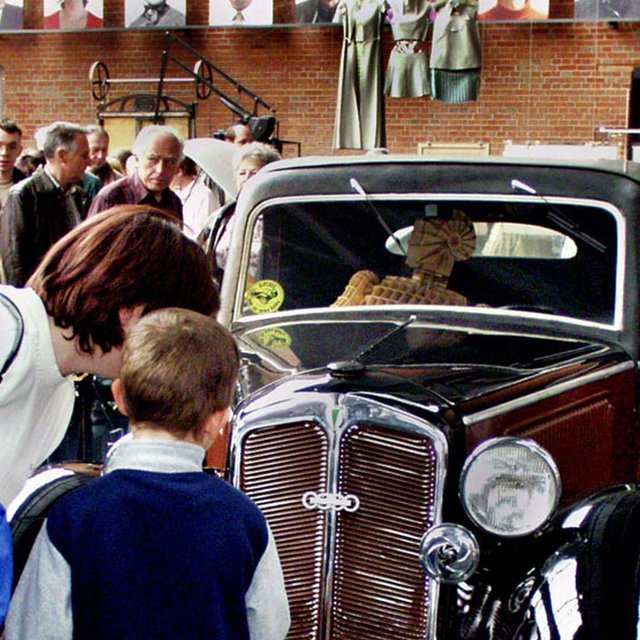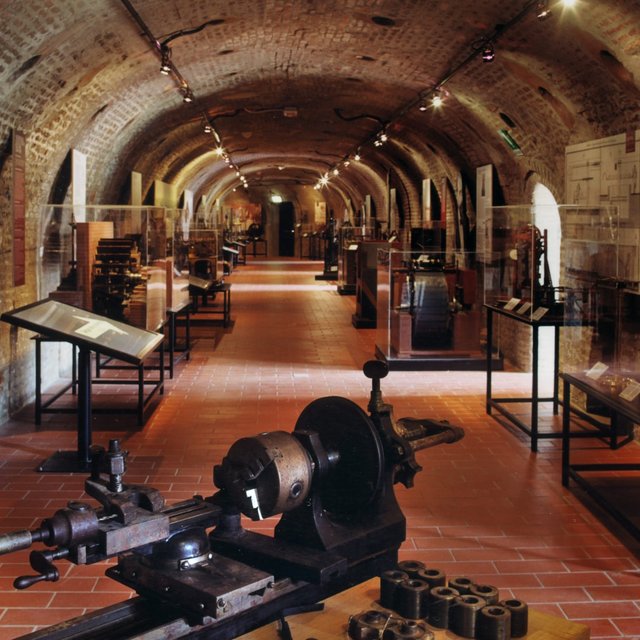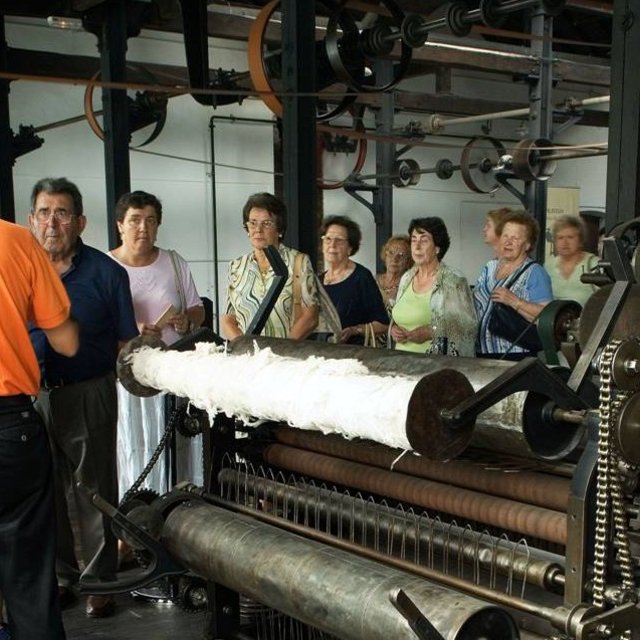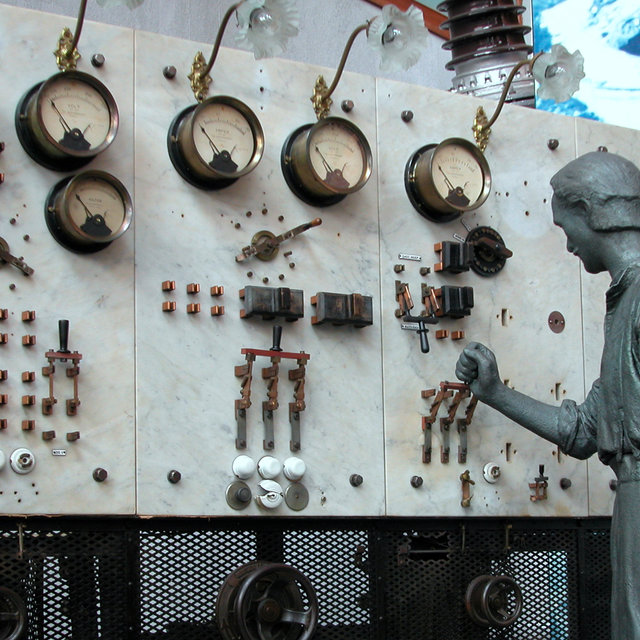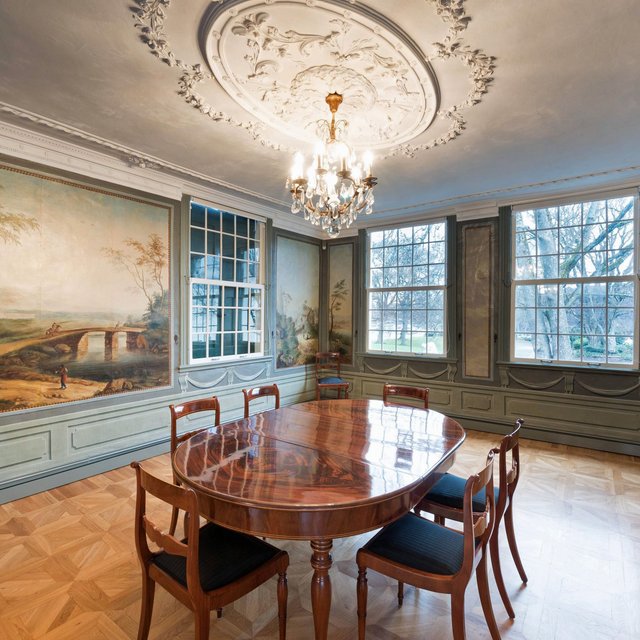European Themeroute | Textiles
The thousands of rattling bobbins on the spinning frames in cotton factories have become a byword for industrialisation. British cotton mills were indeed the forerunners of, and models for the industrial revolution. That said, the first textile factory was a silk twining mill. The five-storey building ... more
 From raw materials to the factory. European Theme Route Textiles
From raw materials to the factory. European Theme Route Textiles
The thousands of rattling bobbins on the spinning frames in cotton factories have become a byword for industrialisation. British cotton mills were indeed the forerunners of, and models for the industrial revolution. That said, the first textile factory was a silk twining mill. The five-storey building was constructed in Derby as early as 1720, and contained more than 26.000 water-driven spindles. Since the Middle Ages Italy had been the centre of silk processing, and the machines came from there. The problem was that they were incapable of spinning, and simply twisted thin silk thread to strong yarn.
One of the forerunners of mechanisation was John Kay’s flying shuttle which he invented in 1733. This speeded up weaving considerably for the weavers no longer had to push the shuttles through the warp threads over the spinning frame by hand. Nevertheless Kay’s invention remained an isolated step forward on the long road to power looms. The mechanisation of the textile industry began with spinning.
The striking lack of yarn in the wool industry, one of the most important sectors of the British economy, led to attempts to mechanise the work of the spinsters. The women workers would take a bundle of extremely thin short fibres, the so-called shear wool, and pull out the fibres by hand, before stretching and twisting them. In the 1730s two inventors by the name of Lewis Paul and John Wyatt developed a machine with two sets of differential rollers which were able to draw out the slivers of wool and spin them into yarn with the help of spindles, similar to the process in a spinning wheel.
But it was not until 1769 that Richard Arkwright succeeded in constructing a workable spinning machine able to produce strong yarn suitable for the warp threads of the spinning frame. Since he intended his invention to be driven by water it was called a water frame. Arkwright opened his first spinning mill in Cromford, and soon he had built up an empire and become one of the most powerful entrepreneurs in the industrial era.
An alternative solution was offered by the spinning jenny, invented by a weaver called James Hargreaves in 1764. In it, two boards with several spindles were used to imitate the hands of the spinning women. Experienced workers were necessary to operate the machines, but nonetheless productivity was much higher than by hand spinning. Since the threads produced by the spinning jenny lacked strength they were an ideal complement to those produced on the water frame, and the machine was used for decades by homeworkers.
In 1779 Samuel Crompton invented a hybrid machine in Lancashire which combined the best features of both its predecessors. His spinning mule was not only capable of spinning warp and weft thread, it could also produce a much stronger finer yarn. Over the next ten years British wool-processing accelerated at an unbelievable rate and spinning mills shot up all over the place. Based on Arkwright's original factory, they were long redbrick buildings on several stories containing water driven machines with a capacity of up to 1000 spindles.
Crompton’s "mule" was soon adapted to steam-driven power, but it was not until the 1820s that the decisive innovation was made. In that year an engineer by the name of Richard Roberts succeeded in developing the first fully automatic spinning machine. His "self-actor", as it was known, made expert weavers redundant. The spinners, who were now robbed of their basic existence, reacted with desperate and violent protests.
The final major change was the ring spinning machine, which was much more reliable. It was developed in 1828 in the USA and slowly established itself in Great Britain, where spinning was already strongly mechanised. All the technical problems involved in changing over from hand-spinning to machinery had now been solved, and mechanisation – with the concomitant protests - now moved over to weaving.
Edward Cartwright had already developed a mechanically-driven weaving loom in the 1780s. He took over all the basic elements of a hand weaving loom and adapted them so that they could be driven by a machine which could size the warps, push the shuttles through the weft threat and stretch the resulting cloth. But it was not until 1822 when (once again) Richard Roberts succeeded in perfecting the technical details and manufacturing the machines mainly from iron and steel, that mechanically-driven weaving looms began to establish themselves. Thousands of handloom weavers were thrown out of work and threatened with starvation, and the last specialist workers were replaced by cheaper, specially trained women. In protest, the desperate workers began to destroy the machines and attack anyone who tried to construct them; and at times the social conflicts resembled a bloody civil war.
The complete production process was now mechanised, from the original ball of fibres to the completed cloth. Manufacturing was now increasingly concentrated in factories where the fibres were not only spun but also woven. The port of Liverpool with its major exchange, and the expanding industrial city of Manchester made the county of Lancashire the leading textile region in the world. Hundreds of thousands of workers abandoned the countryside for the cities, and the textile industry quickly became the leading sector in the British economy, with cotton processing at the top. In order to satisfy the insatiable demand, cotton plantations were cultivated in America.
As early as the end of the 18th century British industrialisation began to move to other countries. In 1783 a German entrepreneur by the name of Johann Brügelmann built the first cotton spinning factory in Ratingen, and called it "Cromford" after the original in England. Other factories based on Arkwright's factory were built in France and Bohemia.
Since mechanisation in weaving came much later than in spinning, other countries were able to keep pace with Great Britain. Competitive weaving industries arose primarily in the New England states of the USA, in France, Switzerland, Germany and Belgium. These also contributed to further technical improvements. For example, a French man by the name of Joseph Maria Jacquard made possible the automatic production of pattern weaving by punching designs into pattern cards joined together to form a continuous chain. The weavers operated the first industrialised jacquard machines by foot.
The industrial revolution in cotton processing had no fundamental repercussions on other branches of industry. But centralised manufacture in factories radically transformed economic and social life. Tensions between capital and labour now replaced an agrarian landowning system.

ERIH Anchor Points
Museum of Industry
Industriemuseum
Minnemeers 10
9000
Gent, Belgium
tim - State Textile and Industrial Museum
Augsburger Kammgarnspinnerei (AKS)
Provinostraße 46
86153
Augsburg, Germany
German Technical Museum
Trebbiner Strasse 9
10963
Berlin, Germany
The Bocholt Textile Factory
Uhlandstraße 50
46397
Bocholt, Germany
Saxon Museum of Industry | Chemnitz Museum of Industry
Zwickauer Straße 119
09112
Chemnitz, Germany
Nordwolle
Nordwestdeutsches Museum für Industriekultur
Am Turbinenhaus 10-12
27749
Delmenhorst, Germany
Mueller Cloth Mill LVR Industrial Museum
Carl-Koenen-Str. 25b
53881
Euskirchen, Germany
Museum of Industrial Heritage
Museo del Patrimonio Industriale
Fornace Galotti
Via della Beverara 123
40131
Bologna, Italy
Campolmi Factory | Lazzerini Library | Textile Museum
Istituto culturale e di documentazione Lazzerini
Via Puccetti, 3
59100 Prato
Telephone +39 (0) 574 - 1837800
Museo del Tessuto
Via Santa Chiara 24
59100
Prato, Italy
Museum of Wool Art
Museo dell’Arte della Lana
Fondazione Luigi e Simonetta Lambard
Via Giovanni Santori 2
52017
Pratovecchio Stia, Italy
Textile Industry Museum
Tekstilindustrimuseet
Salhusvegen 201
5107
Salhus, Norway
Central Museum of Textiles in Łódź
Centralne Muzeum Włókiennictwa
ul. Piotrkowska 282
93-034
Lódź, Poland
Manufaktura | Museum of the Factory
Muzeum Fabryki
Drewnowska 58
91-002
Lódź, Poland
Turismo Industrial
Rua Oliveira Junior nº 591
3700-204
S. Joao da Madeira, Portugal
La Encartada Fabrika-Museoa
El Peñueco 11
48800
Balmaseda, Spain
National Museum of Science and Technology of Catalonia
Museu Nacional de la Ciència i la Tècnica de Catalunya (MNACTEC)
Rambla d’Ègara 270
08221
Terrassa, Spain
Museum of Work Norrköping
Arbetets museum
Laxholmen
602 21
Norrköping, Sweden
Cromford Mills World Heritage Site
Cromford Mill
DE4 3RQ
Cromford, United Kingdom
Verdant Works
West Henderson´s Wynd
DD1 5BT
Dundee, United Kingdom
Stanley Mills
Mill Square
PH1 4QE
Perth, United Kingdom
Member Sites ERIH Association
Jizera Mountains Technical Museum
Jizerskohorské Technické Muzeum
Bily Potok 295
46362
Hejnice, Czech Republic
Nový Jičín – Town of Hats Visitor Centre
Návštěvnické centrum Nový Jičín
- město klobouků
Masarykovo náměstí 45
74101
Nový Jičín, Czech Republic
Forssa Museum & Pattern Centre on the Spinning Mill Area
Forssan museo
Wahreninkatu 12
30100
Forssa, Finland
Valvilla Wool Mill Museum
Valvillan tehdasmuseo
Kankurinkatu 4-6 (Inner courtyard of the Wool Mill)
05800
Hyvinkää, Finland
Finnish Labour Museum Werstas
Työväenmuseo Werstas
Väinö Linnan aukio 8
33210
Tampere, Finland
Museum Centre Vapriikki
Alaverstaanraitti 5
33101
Tampere, Finland
Ecomuseum of the Avesnois
Écomusée de l’Avesnois
Place Maria Blondeau BP65
59612
Fourmies, France
Saxony Industrial Museum | Pfau Brothers Textile Factory
Leipziger Strasse 125
08451
Crimmitschau, Germany
The House of Silk Culture
Luisenstraße 15
47799
Krefeld, Germany
Wuppertal Museum of Industrial Culture - Engels House | Museum of Early Industrialisation
Engelsstraße 10
42283
Wuppertal, Germany
Silk museum
73 E Venizelou St
684 00
Soufli, Greece
Crespi d’Adda World Heritage Site
Crespi D’Adda, patrimonio dell’Umanità UNESCO
Corso Manzoni 18
24042
Capriate San Gervasio, Italy






